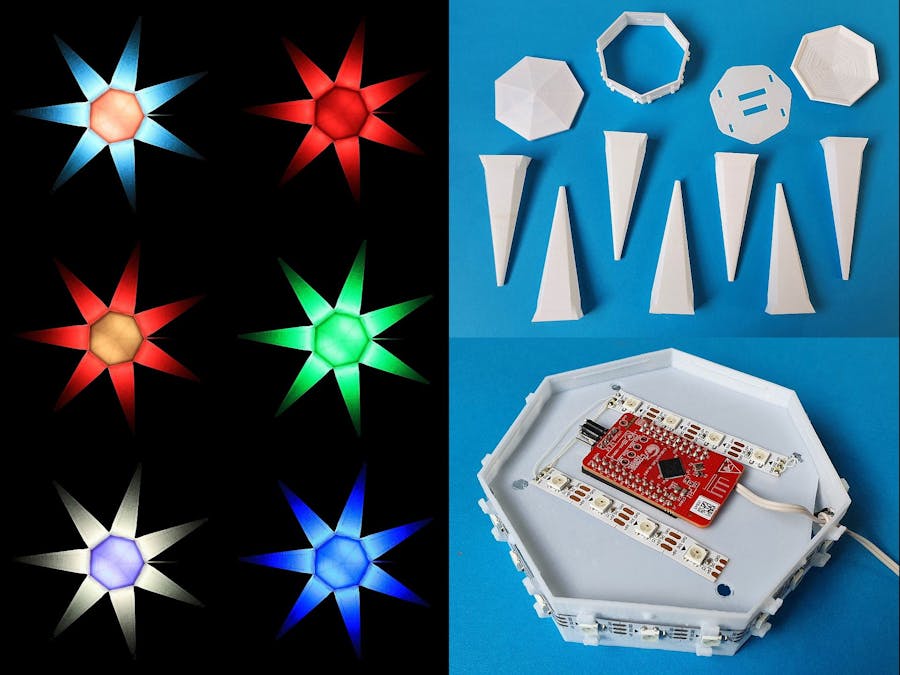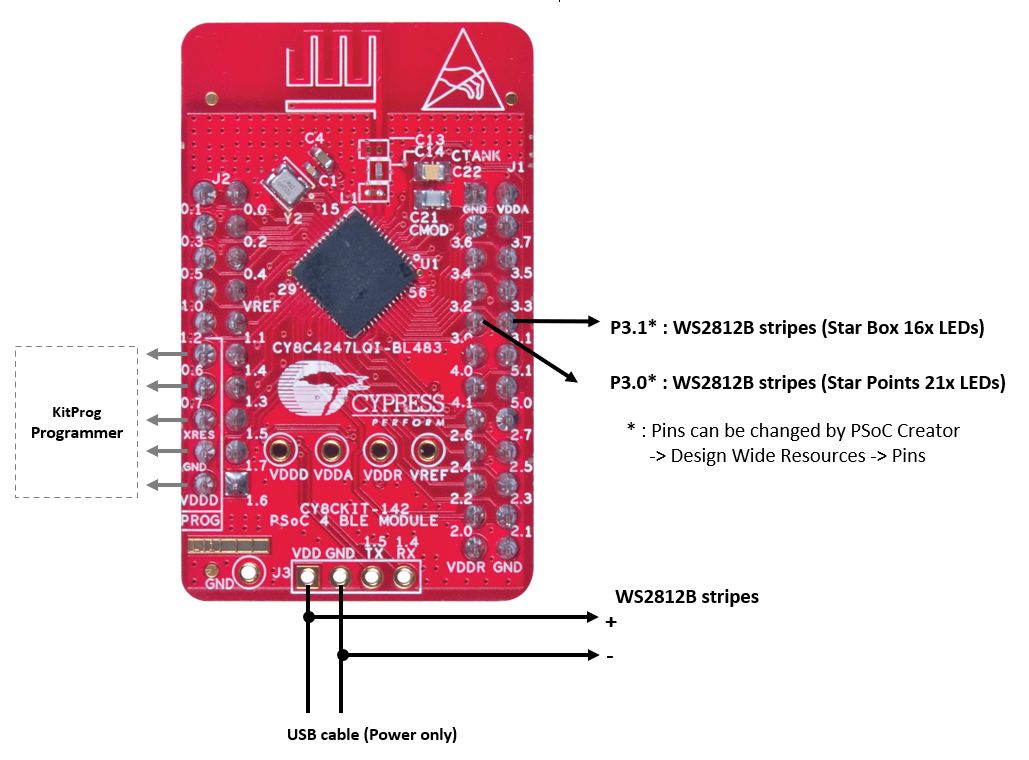Out from my former projects with WS2812b based stripligths I focused this time on the 3D printing part to give my electronics a nice case: A 7-point-star to be used for the seasonal decoration.
The electronics, again, Cypress PSoC4BLE, and its firmware allows to address individual colors for the points and the body of the star. The program sequencer runs some color effects defined by the user. Further, the star can be controlled via BLE, same as the firmware can be upgraded Over-the-Air (OTA). Let us see some details...
3D-constructionThe complete star consists of eleven 3D-printed parts:
- 7 x Star Points (Choose 15, 17 or 19 cm length)
- 1 x Star Body (approx. 11 cm)
- 1 x Inner Plate fixing the electronics
- 2 x Cover Lids
All 3D parts have been designed with FreeCAD, sliced by Cura and pinted with the Anet-A8 using Janbex' white PLA filament.
ElectronicsUser can choose whatever preferred microcontroller that allows to control WS2812B LED stripes. This project describes using the Cypress PSoC4BLE module, what I have used in older projects already.
- PSoC4BLE module
- 21 strip light LEDs (type 60 leds/m)
- 2x8 strip light LEDs (type 60 leds/m)
- 5m cable
- 1 USB connector
The blockdiagram and schematic demonstrates the simpleness of that project from the electronics point of view.
The software is developed using Cypress' PSoC Creator. Some effort was spent to implement some fading algorithm to change the color smoothly while the user can easily define his prefered color scheme and sequence. The color can be defined seperately for the star center and the point. Each point is illuminated by three LED, which can be individually can be programmed that allows special effects like circling.
As each user has his own color preferences program updates including the individual programmed color sequences can be one over the air.
And, last but not least, the complete StripLightStar can be controlled by Cypress' CySmart BLE App to change the color from your mobile phone.
The OTA booloader usage and CySmart BLE APP are already explained in last year project CyBalls.
PicturesSome color examples show a same-colored star, or body and points having different colors. So, the user can design the individual preferred color scheme.
Of course, the color transition time is definable and individual programmable for each change. Just for the video it was chosen to be relatively quick for demonstration purpose. In reality a lower speed might be more relaxing. But that is up to you!
OutlookWishing you all the best to stay safe and healthy in this Covid-19 time! Stay at home, start your printer... and get your home nicely illuminated!Regards, Holger











Comments
Please log in or sign up to comment.